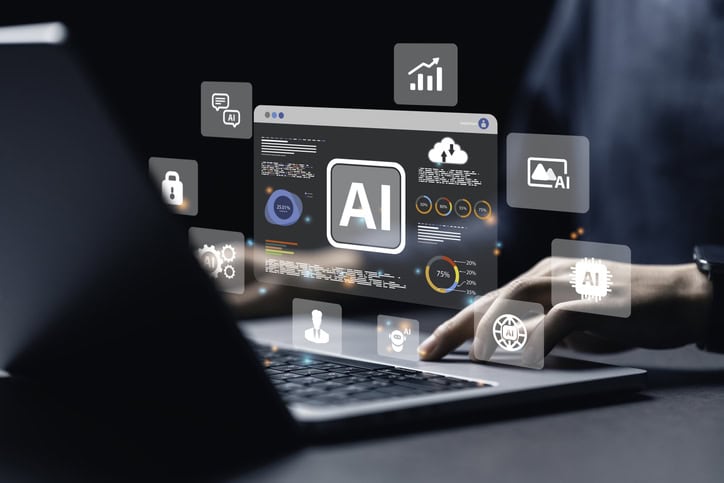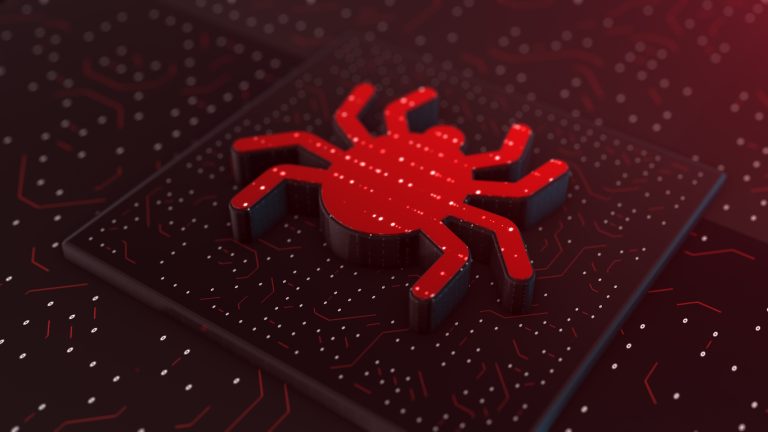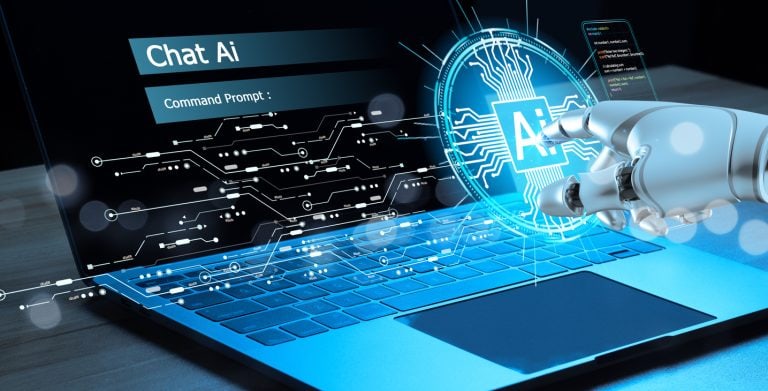Supercharge Your Team with AI Code Review Tools in 2024

Did you know that integrating AI into your code reviews can reduce errors by up to 70%? In today’s fast-paced tech world, staying ahead means embracing the latest innovations. Learning how to leverage AI code review tools is now a critical skill for all software developers. Let us dive into how AI code review tools can transform your development workflow and help you become a more efficient developer!
The Growing Importance of AI in Code Reviews
If you’ve been paying attention to software development trends lately, you’ll notice that AI is making significant strides in code reviews. From AI-powered analysis to automated feedback, AI’s impact on our industry is nothing short of revolutionary.
In the past, code reviews were a time-consuming process prone to human error. But then AI stepped in, and things changed dramatically. AI-powered tools are now capable of analyzing vast codebases in minutes, catching issues that even seasoned developers might overlook.
Looking ahead, AI is set to redefine code reviews. Experts predict that AI will continue to evolve, taking on more complex tasks and enabling developers to focus on creative problem-solving. If we don’t adapt and learn to work alongside AI, we risk being left behind in this rapidly advancing field.
Why AI Code Review Tools are Essential in 2024
So, why are AI code review tools such a big deal this year? Let’s break it down.
Evolution of Code Reviews
Code reviews have come a long way from being optional peer checks to becoming an integral part of the development process. With codebases growing in complexity, the traditional manual review process just doesn’t cut it anymore. AI offers a solution by automating repetitive tasks and providing insights that speed up the review process.
Benefits of AI Integration
- Speed and Efficiency: AI can analyze code faster than any human, reducing bottlenecks in your development pipeline.
- Consistency: Automated tools apply the same standards across all code, ensuring uniform quality.
- Early Bug Detection: AI algorithms can spot potential issues early, saving time and resources down the line.
Addressing Concerns About AI Replacing Developers
I get it—there’s a lingering fear that AI might replace us someday. But from my experience, AI is a tool that enhances our capabilities rather than replaces them. It handles the grunt work, allowing us to focus on more complex, creative tasks.
How AI Complements Human Expertise
AI excels at pattern recognition and can sift through code to find issues quickly. However, it lacks the human touch for nuanced decisions and innovative solutions. Combining AI with human expertise results in a more robust and efficient development process.
Essential AI Code Review Tools Every Developer Should Know

There are several AI code review tools making waves in 2024. Let’s explore some of the top contenders that can elevate your coding game.
Codacy: Streamlining Code Quality Across Teams
Codacy has been a game-changer for many developers. Supporting over 30 programming languages, it seamlessly integrates with platforms like GitHub, GitLab, and Bitbucket. What I love about Codacy is how it identifies bugs, security vulnerabilities, and code duplication almost instantenously.
When deadlines are tight and code quality can’t be compromised, integrating Codacy into the workflow can save time and significantly improve code quality. The customizable quality standards allow teams to enforce coding practices uniformly, ensuring consistency across the entire codebase.
Key Features:
- Language Support: Over 30 programming languages.
- Platform Integrations: GitHub, GitLab, Bitbucket.
- Quality Enforcement: Customizable rules and standards.
- Plans and Pricing: Free tier for public repositories; paid plans offer faster analysis and more features.
SonarQube: Continuous Code Quality Monitoring
When it comes to static code analysis, SonarQube is a powerhouse. It provides continuous code quality monitoring and integrates smoothly into CI/CD pipelines. The multilingual support makes it a versatile tool for diverse projects.
When maintaining code health across multiple services, using SonarQube can be highly effective. Its deep insights into bugs and security vulnerabilities are invaluable, allowing teams to catch issues early in the development cycle. The ability to identify and address problems proactively saves countless hours down the line and enhances overall code quality.
Key Features:
- CI/CD Integration: Seamless incorporation into pipelines.
- Multilingual Support: Supports multiple programming languages.
- In-Depth Analysis: Detailed reports on bugs and vulnerabilities.
- Team Collaboration: Enhances code ownership and accountability.
Snyk: Securing Open-Source Dependencies
Open-source libraries are a staple in modern development, but they come with their own set of risks. Snyk specializes in scanning code and third-party libraries for security vulnerabilities. It’s like having a security expert constantly reviewing your dependencies.
In projects that rely heavily on open-source components, Snyk plays a crucial role in maintaining security. It alerts teams to vulnerabilities that might otherwise be overlooked, ensuring that applications remain secure.
Key Features:
- AI-Driven Scanning: Detects vulnerabilities in code and libraries.
- Integration: Fits into existing workflows and tools.
- Actionable Reports: Provides solutions to identified issues.
- Complementary Tool: Works well alongside other code review tools.
PullRequest: Combining AI with Human Expertise
PullRequest takes a unique approach by blending AI with human code reviewers. When we needed rapid feedback without sacrificing quality, PullRequest was our go-to. Their expert reviewers provided insights that automated tools might miss.
During critical project phases that require quick turnarounds on code reviews, PullRequest delivers feedback within 90 minutes. This rapid response helps teams stay on schedule without compromising on code quality.
Key Features:
- Hybrid Approach: Combines AI analysis with human expertise.
- Fast Turnaround: Reviews completed in as little as 90 minutes.
- Risk Identification: Focuses on high-risk areas.
- Quality Assurance: Ensures code meets industry standards.
Metabob: AI-Powered Debugging for Complex Codebases
For complex codebases, Metabob is a lifesaver. It uses AI to detect issues that might be missed by human reviewers or traditional static analysis tools. When working on large-scale projects, Metabob helps uncover subtle bugs that could have caused major problems down the line.
By leveraging advanced AI algorithms, Metabob enhances the debugging process by providing insights that traditional tools might overlook. It excels in analyzing complex code structures and dependencies, making it especially useful for projects with intricate architectures. Teams can rely on Metabob to improve code reliability and maintainability, ultimately leading to more stable and efficient software releases.
Key Features:
- Advanced AI Debugging: Goes beyond surface-level analysis.
- Issue Detection: Finds subtle, hard-to-spot problems.
- Scalability: Ideal for large and complex codebases.
- Efficiency: Reduces time spent on debugging.
Integrating AI into Your Daily Workflow

So, how do you actually start integrating AI into your daily routine? It might seem a bit daunting at first, but don’t worry—it’s more straightforward than you think.
Assess Your Current Workflow
Identify areas where you spend a lot of time on repetitive tasks or where errors frequently occur. For me, code reviews were a significant bottleneck.
Start Small and Gradual
Begin by incorporating one AI code review tool into your workflow. I started with Codacy, integrating it into our GitHub pull requests. After a short learning curve, the benefits were practically immediate.
Best Practices:
- Customize Settings: Tailor the tool to match your coding standards.
- Educate Your Team: Ensure everyone understands how to use the new tool.
- Monitor Impact: Regularly assess the tool’s effectiveness and make adjustments.
Overcoming Challenges
You might face compatibility issues or a learning curve with new tools. Just continue to practice with your new tool(s) diligently and with patience. This is especially important when working with a team. You’ll need to maintain an open communication with all team members and help each other better understand how to use AI code review tools.
Automating Repetitive Tasks with AI
We all have those tasks that are just plain tedious. Whether it’s code formatting or checking for style consistency, these repetitive tasks can eat up a significant chunk of your day.
Identifying Repetitive Tasks
Make a list of activities that are routine and don’t require much creative thought. For me, enforcing coding standards was a prime candidate.
Using AI for Automation
AI can automate these mundane tasks, freeing you up for more important work. I use Github Copilot to mimic the style of one of my components when I want to recreate a similar component in React.
Measuring Efficiency Gains
Not only did I save time, but I also reduced the possibility of human error. Tracking these gains can help justify the use of AI tools to stakeholders.
Enhancing Collaboration with AI Tools

Let’s talk about how AI can significantly enhance teamwork and collaboration.
AI in Code Reviews
AI tools can streamline the code review process by catching common errors before the code reaches a human reviewer. This not only speeds up the review process but also allows team members to focus on more complex issues.
Improved Communication
AI can provide clear, automated feedback, reducing misunderstandings and ensuring everyone is on the same page regarding coding standards.
Version Control Integration
AI enhances version control systems by predicting and resolving code conflicts, especially when multiple developers are working simultaneously.
Addressing Ethical Considerations
As we dive deeper into AI, it’s crucial to consider the ethical implications.
Data Privacy
Ensure compliance with data protection regulations. Tools should handle code securely, especially if you’re working with proprietary or sensitive data.
Mitigating Bias
AI algorithms can inadvertently perpetuate biases. Regularly audit your AI tools to ensure they’re functioning fairly.
Transparency
Being open about how you’re using AI builds trust with users and stakeholders. Document your AI integrations and be prepared to explain their functions.
Future-Proofing Your Career with AI Expertise
The demand for AI-savvy developers is on the rise. Companies are seeking professionals who can blend traditional development skills with AI knowledge.
Continuous Learning
Allocate time for learning new AI tools and concepts. Online courses, workshops, and webinars are great resources. You can learn more about this in my blog post: 7 Best Online AI Courses for Developers.
Networking
Attend AI conferences, join online forums, or participate in hackathons. Connecting with industry leaders can provide insights and opportunities.
Building Your Personal Brand
Showcase your AI projects on platforms like GitHub or write articles sharing your experiences. This not only enhances your resume but also positions you as a thought leader.
Conclusion
Embracing AI code review tools in 2024 is a strategic move for any developer looking to enhance productivity and code quality. By integrating AI into your workflow, you’re not just keeping up with the times—you’re staying ahead of the curve. Ready to elevate your coding game? Dive into these AI tools and watch your productivity soar!
Have any questions about AI or suggestions for future blog topics? Feel free to leave comment below.






